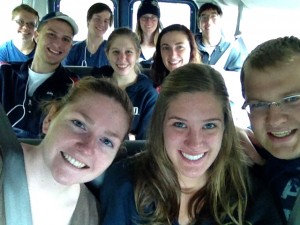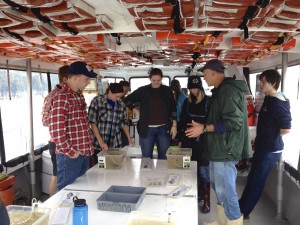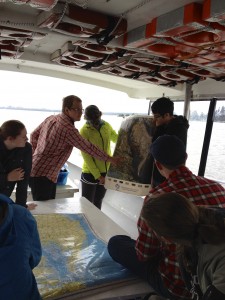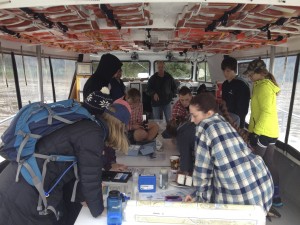I was a little skeptical when I found out that our fall break trip would be to the Washington, D.C. and Annapolis areas. To be brutally honest, I thought the trip was going to be rather lame in comparison to the trips my friends were taking with their SSIRs to places like the Dominican Republic and California. If there is anything that this class and our trip have taught me, though, it is that there are so many wonderful things occurring right here (essentially) in our own backyards. There are so many things to learn about here that have such relevance and importance to our daily lives, and they are often overlooked and taken for granted.
I was pleasantly surprised with the educational quality of the activities and daytrips we participated in through the Chesapeake Bay. Local foundations such as CBF, I always assumed, were geared at a much younger crowd because I presumed they see a lot more of local elementary, middle, and high school age students than they do students from universities. However, I think the crews on our trips did a fantastic job at facilitating a level of conversation geared at students our age with the basic background knowledge of watersheds and the Chesapeake Bay area.
As for the state of the Potomac River itself, there were aspects of it that shocked me in both positive and negative ways. Overall, the river was in better condition than I thought it was originally. Although our catch with the trawl net on the Potomac was not exactly the most diverse, it was reassuring to hear that was the least diverse catch captain Eric had seen all year and that the lack of diversity was more than likely a result of the recent weather as opposed to the state of the river. I was also shocked to learn just how clean the discharge at Blue Plains from the wastewater treatment plant actually is. They are truly making amazing advances right in D.C. regarding waste management and disposal, and they are providing a model for other waste management facilities to study and replicate. Something that shocked me negatively, though, was how high the levels of nitrogen are in the Chesapeake Bay. When I first saw the test results, I thought there must have been something wrong with the testing equipment. I never would have thought about the agricultural runoff in the area as a contributing factor, especially not while out on the water when there is not a single farm in sight.
The interactive aspect of this trip is what really drove home all of the points for me. Being able to test the water quality with chemical tests, turbidity tests, and observation and then analyze both quantitative and qualitative data through our organism collection really allowed me to fully grasp the significance of the problems occurring in the Chesapeake Bay watershed as a whole; everything made sense. It was interesting to learn about the restoration techniques that are occurring, and to talk about ways to get the community involved and make them care about their watershed. These are similar to the problems we discuss concerning the James River watershed, so it was intriguing to hear about what things have or have not worked in another similar watershed area. An obvious way both watershed areas have made an impact on the impressions of their inhabitants was with the implementation of a report card to “grade” how healthy the rivers in the area actually are. I honestly never knew such a thing existed for many areas until taking this class, but listening to the director of Camp Wright talk about the condition of the Potomac based on its last report card really demonstrated that the shock value of providing the disturbing hardcore facts in a way that people can easily comprehend is a fantastic way to get people talking about their watershed.
While we did learn a great deal about the Potomac River and the Chesapeake Bay watershed, and much of this information can be linked back to the James River because of their similarities, it would be interesting to conduct tests similar to those we did on this trip right here on the James. We have read a great deal about the nutrient levels and pollution as a result of the different forms of runoff and atmospheric deposition, but it would be interesting to conduct our own tests and establish quantitative values. These numbers could also be obtained through data that has been previously collected and recorded, but nothing quite beats the shock value of seeing a 35+ as a nitrogen level reading.




